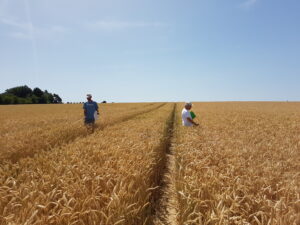
Auxerre, France
About
On this water catchment area polluted by pesticides and nitrates, our objective is to empower local stakeholders in order to develop their knowledge and their capability to design and develop an efficient project for their territory. To achieve this goal, we :
- Involve and support farmers an stakeholders in the project design and management
- Implement the territory with an observatory
Challenges that are identified are high problems with water quality (mainly herbicides, nitrate and turbidity) in the catchment’s water. Herbicides that deteriorate water quality are related to rye grass control, main weed in the local conventional cropping systems.
WATERAGRI solutions are implemented at the pilot site and the step by step design of the project for water quality and its implementation is running. The process is inspired by the Transiteau method.
-
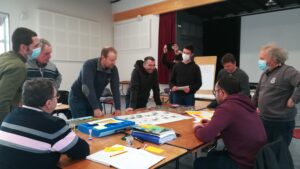
- dav
-
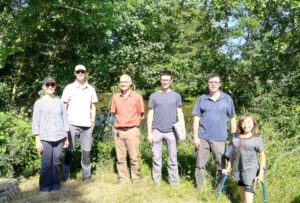
- sdr
Run by
Contact
Raymond Reau
Laurette Paravano
Tested Solution
At the Auxerre case study site the Enhanced Water Retainer Product and Concept from Bay Zoltan Nonprofit Ltd. for Applied Research is being experimented on a farm in a field with sunflower (2021 and 2022).
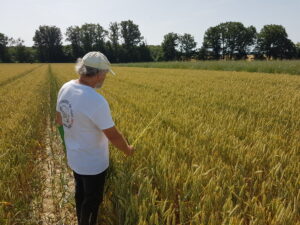
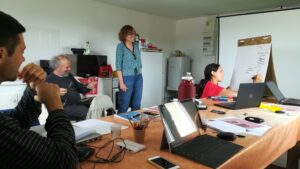
Solution Test Progress
The project has been designed by a group of leaders between the farmers of the territory. Getting farmers involved in the project and implementing it with an observatory and a dashboard are the main tasks to be achieved now.
Solution Enhanced Water Retainer Product and Concept is being tested for the 2nd year (tests in 2021 and 2022) in a field with sunflower.
Publications
- Ferrané C, Paravano L, Prost L, Reau R. V1 : 2016, V2 : 2018, VF : 2020. Piloter un territoire selon une logique de résultat pour la qualité de l’eau : Guide pour une gestion dynamique du projet d’une AAC à enjeu “nitrate”. Guide produit pour les projets ECOSYSTN et DYNAM’EAU financés par l’AFB
- Reau R, Cerf M, Cros C, Ferrane C, Geloen M, Lefevre V, Pasquier C, Petit MS, Schaub A. 2018. Ateliers de conception de systèmes de culture : guide pour leur réalisation avec des agriculteurs. RMT Systèmes de Culture Innovants
- Reau, R., Monnot, L.-A., Schaub, A., Munier-Jolain, N., Pambou, I., Bockstaller, C., Cariolle, M., Chabert, A., and Dumans, P. 2012. Les ateliers de conception de systèmes de culture pour construire, évaluer et identifier des prototypes prometteurs. Innovations agronomiques 20:5–33.
- Paravano, L., Prost, L., and Reau, R. 2015. Observatoire et tableau de bord pour un pilotage dynamique des pertes de nitrate dans une aire d’alimentation de captage. Agronomie, Environnement et Sociétés 6(1):127–133.
- Prost, L. 2018. Le design est-il un concept utile pour les agronomes? Agronomie, Environnement et Sociétés 8(2).
- Prost, L., Bonifazi, M., Ferrané, C., Guichard, L., Jeuffroy, M.-H., Meynard, J.-M., Reau, R., and Souchère, V. 2020. Enjeux conceptuels et méthodologiques liés à la conception de systèmes agricoles préservant la ressource en eau. In D. Leenhardt, M. Voltz, and O. Barreteau (eds.). L’eau en milieu agricole, outils et méthodes pour une gestion intégrée et territoriale Editions Quae. p. 288.
- Prost, L., Reau, R., Paravano, L., Cerf, M., and Jeuffroy, M.-H. 2018. Designing agricultural systems from invention to implementation: the contribution of agronomy. Lessons from a case study. Agricultural Systems 164:122–132.
- Ravier, C., Prost, L., Jeuffroy, M.-H., Wezel, A., Paravano, L., and Reau, R. 2015. Multi-criteria and multi-stakeholder assessment of cropping systems for a result-oriented water quality preservation action programme. Land Use Policy 42:131–140.
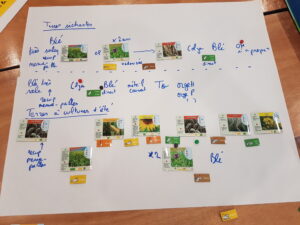
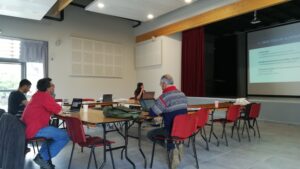
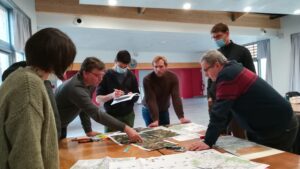

Meeting with farmers and local water authorities.

1st Meeting of the working group.

2nd Meeting of the working group - cropping system design workshop.

3rd Meeting of the working group - farmers identify where to measure water quality and possible locations for constructed wetlands.

4th Meeting of the working group - to formalize proposed projects and to prepare the meeting with farmers and local water authorities.

Meeting with farmers and local water authorities.

Finalization of the dashboard and protocols for the observatory of the project.

Testing the dashboard and the observatory of the project.

Start with studying the possibility of constructed wetlands as part of the project.

Characterize nitrogen loss in the fields of the area.
